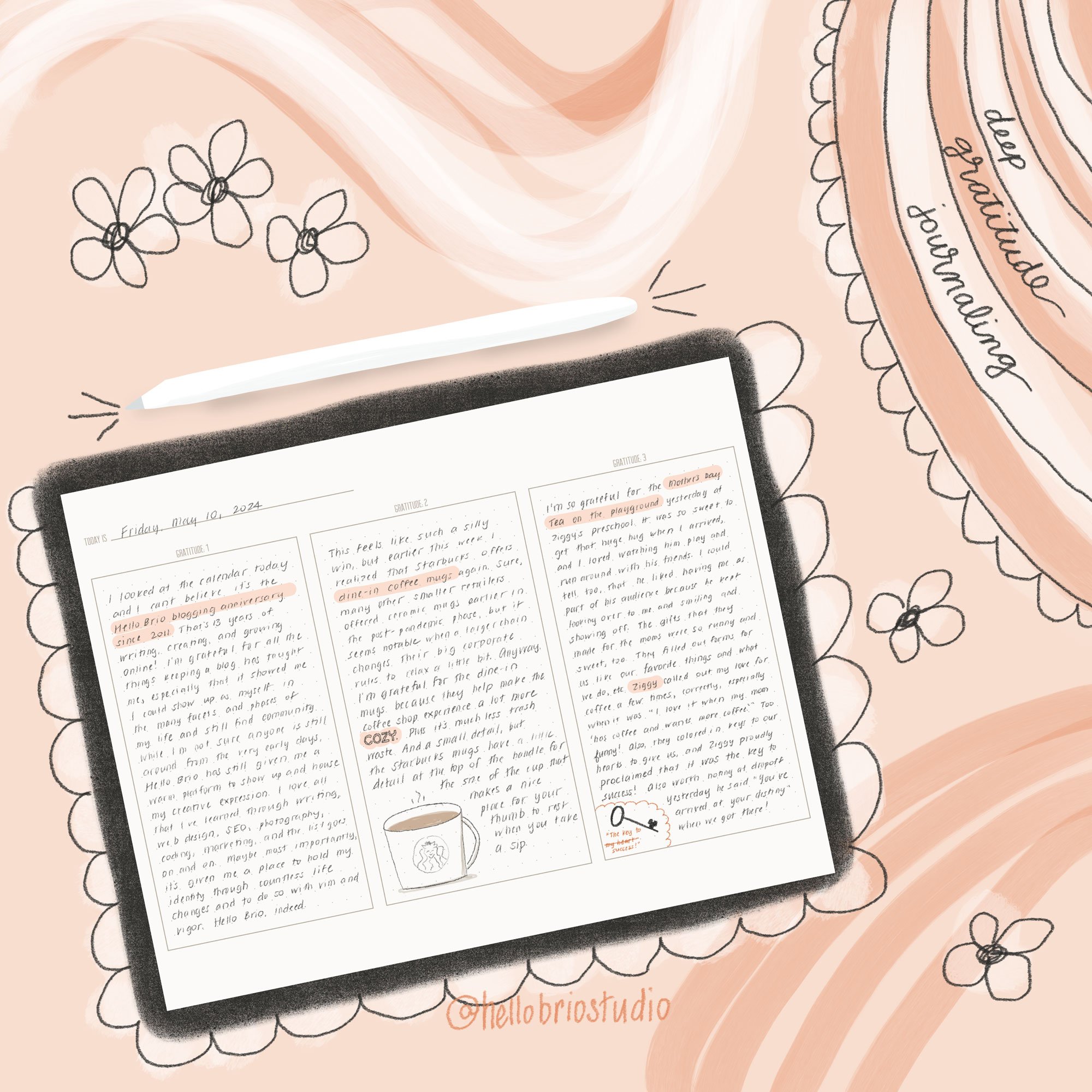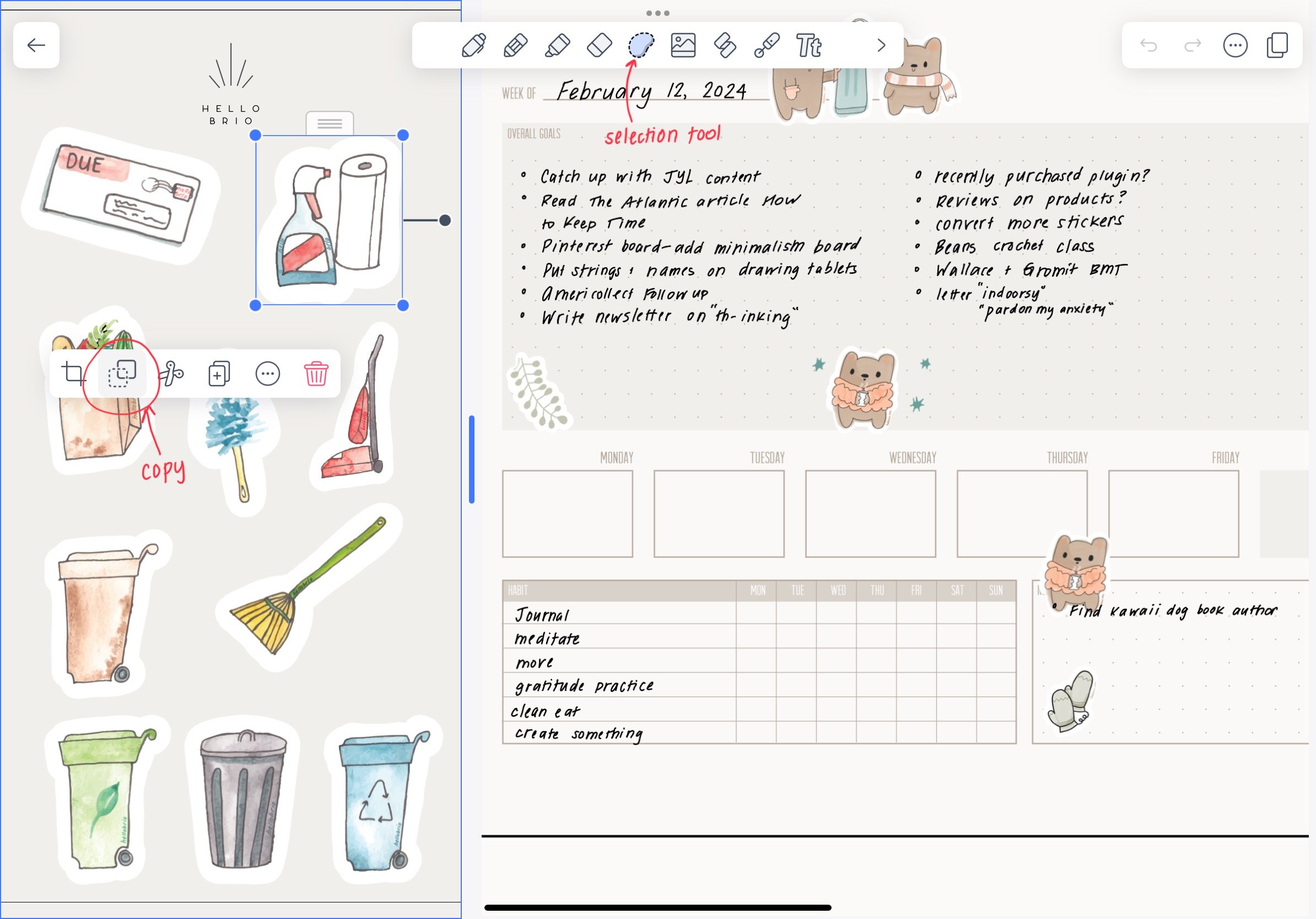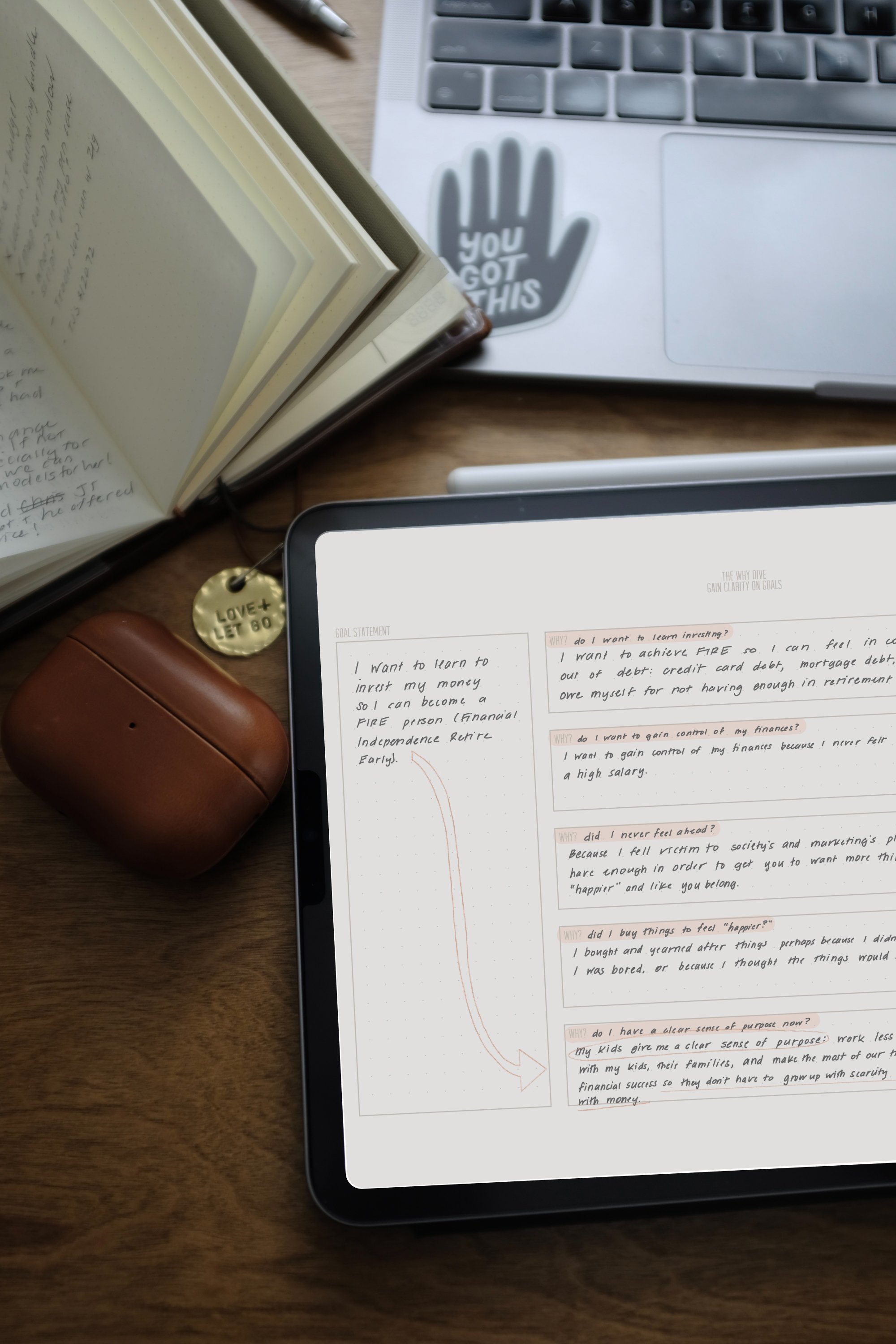How to Reduce Visual Clutter in 6 Quick Steps
Visual clutter can happen to anyone: whether you’re a minimalist or not. The good news is you can reducing or eliminate visual clutter quickly!
It’s amazing how quickly your spaces and surface areas can go from extremely clean and minimal to junky or downright dirty. Whenever you set up a new space, you have every intention to keep it clean and clutter-free, but then let’s be honest: life sets in.
Whether you’re looking to reduce visual clutter quickly (because you have company coming over) or whether you want to do more of a deep declutter so that your space can stay clutter-free for longer, this post and video will help walk you through tips to remove visual clutter fast and make your home or office space more streamlined so that you can have more peace of mind.
In this post, I’ll talk about why visual clutter happens, and I’ll go through 6 steps to get rid of visual clutter fast. Then, I’ll give you a sneak peek into what a deep declutter is (and why you may need to do it), and finally I’ll talk about the benefits of a space with less visual clutter.
Pin for later
Why Visual Clutter Happens
Let’s face it, visual clutter often happens because there’s a deeper issue going on, whether it’s:
Overflowing junk drawers
Organization that needs improving
Shortcuts that you’ve been taking
Sheer laziness
Lack of communication
For example, pretty soon that entry area that you decided would only be for shoes, keys, and bags gets filled with 5x more shoes than you imagined, and is also a landing pad for everything and anything that needs to go out the door. It creates a stressful environment where things get lost.
In my life as a minimalist mompreneur, I can say that my desk especially gets out of control. When I’m in the zone or am working on a bigger project, my desk goes from perfectly streamlined to super messy in 10 minutes flat. Books, trash, cords, extra toys etc start accumulating on my desk and pretty soon I can’t even see the surface of it anymore.
When I go to sit down to do work, I feel stressed by the amount of stuff on my desk and sometimes I have to clean it off before I get any work done. Luckily, it’s easy to run through these 6 steps to clear visual clutter quickly.
6 Steps To Clear Visual Clutter Quickly
Step 1: Start Small
Choose one project to work on at a time. I know it can be really invigorating to think, “Hey! I’m going to clear my whole house out today!” but when it comes down to it, that whole-house project ends up being overwhelming, and then you may end up with a mess that’s bigger than what you started with.
Some places to start?
A dining room table
The top of a dresser
A nightstand
A desk
A coffee table
Etc
Once you fully complete clearing a place from visual clutter by running through these 6 steps, then you can move on to other places.
Step 2: Remove Everything
With any good decluttering project, you want to make sure to remove everything from the area at hand.
I mean everything!
Move all the items to the floor or another location for the moment. Once you see the fully cleared area, then you’ll immediately start to feel the relief of a more streamlined space.
Step 3: Clean the Area
You technically could skip this step, but I recommend cleaning. Chances are, if you’re getting rid of visual clutter, there’s at least a good film of dust on the piece of furniture or area you’re decluttering. Take the time and bust out some homemade cleanser and a rag and wipe it down.
Not only is this good for posterity’s sake, but it’ll just also make the project feel more complete.
Step 4: Decide On The Essential Items
This is easily the most difficult step out of the 6; deciding what you absolutely need in one space can be difficult, especially if it’s a more functional space.
When in doubt? Move it somewhere else.
For example, on my desk I absolutely need my iPad for digital bullet journaling, and my laptop. But everything else? Not needed.
Okay sure, I do keep a wooden box on my desk (Chris made it for me to hold random cords)… and a plant (because who doesn’t love plants)… and a box of tissues because my allergies are out of control.
But everything else?
No, I don’t need my pen and art supply holder. That can go in my art supply closet.
No, I don’t need any toys or books. Those should be put away as well.
I don’t even really need my phone during the workday; any important notifications will come up on my laptop or iPad.
My jacket? Definitely not.
Figure out what items you absolutely need to keep in the space you’re working on by asking yourself, “What is needed in this space to make it functional?”
For decor—yes, minimalists do use decor, thankyouverymuch—a good rule of thumb for decoration is odd makes even. By visual aesthetic law, an odd number of items is more visually appealing than an even number of items (3 vs 4). And a bonus decor tip? Find a trio of items that give you a high, medium, and a low. (See? I am using my very expensive interior design degree after all….)
Step 5: Find a New Home for Everything Else
Don’t just throw the other items onto another table or something. Take the time to put your shit away where it belongs.
Put things away and find a home for everything else.
Yes, this part can get messy too… but it’ll just be part of the process. And it ties into the all-important last step…
Step 6: Create Rules and Guidelines Moving Forward
Once everything has its place and the newly-decluttered space in your home is… uh… decluttered… it’s time to communicate these things to your family.
Tell the people in your household where things are and where things belong. (Your toys don’t belong on my desk; they belong in your toy boxes.)
Tell people the rules for the newly-decluttered space. (One pair of shoes per person in the landing area… no more than that.)
And finally, decide how often you’ll check in with yourself to see if that space needs to be decluttered again. For me? I try to make sure I clear my desk of visual clutter at least once per week.
Sometimes if you find you’re needing to clear visual clutter quite often, you may need to venture into a deeper declutter.
An Introduction to a Deep Declutter
Sometimes, and unfortunately more often than not, surface clutter has to do with a bigger issue that begs the question of, “Do I need to do a deep declutter?“
For me, my desk only has one shallow drawer and I find I need a lot of stuff in that one drawer, but it’s always jam-packed with stuff that I feel I need at any given moment. As a result, a lot of the things that should go into the drawer ends up on top of my desk, which ends up subconsciously or consciously stressing me out, and it can also lead to more visual clutter because you think, “Hey, it’s already messy, why not just throw another couple things here too?”
The method to a deep declutter is similar to the 6 steps to reduce visual clutter: simply choose your project (i.e. my desk drawer), remove everything from it, clean it, decide on what’s essential and what can go elsewhere, and then create new guidelines for yourself.
Because a deep declutter involves more effort, make sure that you have the time and energy needed to finish the project, or else you could end up with even more visual clutter than what you started with!
Whether or not you choose to do a quick visual declutter or a deep declutter, there are so many benefits to running through this minimalism exercise whenever you see fit.
The Benefits of a Space that is Clear of Visual Clutter
SO. MANY. BENEFITS.
Easier to clean
Less likely to have accumulation of clutter again
Everything will have its place
Less stress (stuff everywhere causes me anxiety and I find it distracting)
A more calming space
Things are less likely to get lost
Inspire you and your family to prioritize minimalism so that you can have a streamlined home overall
And perhaps most importantly?
By having a (visually) decluttered space, you’ll have more time and energy to focus on what matters to you.
Click for Full Video Transcript
- Visual clutter can happen to anyone, whether or not you're a minimalist. But the great news is that you can reduce or eliminate visual clutter very easily and quickly.
- It's really kind of nuts how quickly your spaces can go from clean and streamlined to visually junkie in like seconds flat. And let's just face it—even though we get everything perfect, life sets in and we get lazy and things get left all over the place. And before you know it, you have a visually cluttered space.
- So whether you're looking to reduce visual clutter quickly, if you have company coming over, or if you're looking to do more of a deep declutter so that your spaces can stay clutter-free even longer, this video will walk you through tips to reduce visual clutter fast so that you can have a clean and streamlined space that is more calm and peaceful.
- Hey, I'm Jenn, the minimalist mompreneur. I run Hello Brio, a community of conscious creatives who want to achieve more in their business with less time, energy, and effort.
- This month, I'm participating in a collab playlist with some of my favorite minimalist YouTubers. The playlist, Minimizing in May, is designed to help you get acquainted with minimalism and show you how it can help you in your life. We've all created videos filled with minimalism tips and inspiration to help you in your own minimalism journey.
- So in my personal life as a minimalist mompreneur, I find that my desk gets cluttered very quickly. I come into the day with the best of intentions, have my cup of tea and my water, and maybe my iPad and my laptop and that's it. But before I know it, I look back at my desk and it's a couple hours later. I haven't moved probably, and I have bags of snacks everywhere, tissues and trash and toys. And I don't even know how things end up on the desk like that, but it just happens.
- So here are the six steps to clear visual clutter quickly.
- Number one, start small. I know it can be really exciting to think “I’m going to clean my entire house and everything's going to be perfect in an hour.” And if you can do that, great, that's awesome. Good for you. However, a lot of times when we go to declutter something or clean something in general or minimize something, we can get overly excited and before we know it, hours have passed and now we have a bigger mess on our hands. So I recommend choosing one space to clear visual clutter at a time.
- The second step is to remove everything from the area that you're working on. And I mean everything. Just take everything off the surface of the desk or whatever you're working on, and move it to another location, whether it's the floor or another table or something else.
- The third step is to clean the area. This is just a step that you can choose with whether or not you want to do, but let's be honest, if there's that much visual clutter, there's at least a good film of dust on the table, if not other things like food scraps, et cetera. So it's just good practice to clean after you removed everything.
- The fourth step is probably the most difficult, and this is to decide what is absolutely essential for the space that you're working on. For example in my desk, I have to have my laptop… obviously. If I didn't have my laptop, I couldn't do my work. I also need have my iPad so that I can do my digital bullet journaling. And I probably also need some coasters so that I can drink my tea and my water without having to worry about damaging the desk. Everything else that I had on my desk, whether it's a pen holder or extra electronics or toys or books, those can all go away. They're not things that I need. And even though there are some art supplies that I may need from time to time, I can put them elsewhere so that they're not distracting me from my day-to-day work.
- If you're trying to decide if an item is essential or not, I say, when in doubt, just move it to another place. You can always bring it back later, but keeping it around when you're not sure generally isn't going to work out. When it comes to decor, if you're decluttering something that is more of a decoration piece than a functional space, like a desk, just remember that in decoration odd makes even. Basically what that means is that when you have a space that you're decorating, an odd number of items is going to be more visually appealing than an even number of items.
- Number five is to find a new home for everything. This is where the visual decluttering process gets a little bit sticky because then you have to try and organize and put away everything else in a non throwing things type of way. So you don't want to just throw things in a junk drawer. We want to make sure that we can have a good place for everything to go and that everything has its own place. And again, I'm going to go into deep decluttering a little bit later in this video.
- The last step is to create some guidelines about the rules that you want to have for visual clutter in your home. This can be for you or your family or whoever you want to communicate this to. You're going to want to communicate these rules to people, communicate locations of things to people. And then also decide how often you want to go through these six steps of visual decluttering.
- So really quick, deep decluttering can get very, very, very time intensive, very quickly. More often than not, visual clutter has to do with a larger issue that you can't really see. So in order to do a deep declutter, the steps are actually the same. It just takes a little bit longer. There are some challenges to a deep declutter, and that really just has to do with the time and effort that you were about to put into something, because there's a lot more involved. You have to plan to have more time and space to complete the project. And also you'll find that when you do a deep declutter, the project can get expansively bigger and bigger as you go, just because of things that need to be put in specific places or put away or swapped or sold or donated, et cetera.
- So whether or not you choose to do a quick visual declutter or a deep declutter, this exercise is going to have a lot of benefits for minimalism and visual appeal. There are tons of benefits to a clutter-free space.
- For me, I find that clutter produces anxiety and stress that is just not needed when I want to sit down and write a piece or do some work. I want to be able to focus on the task at hand so that I'm not distracted by things here and there. And just being able to look around and taking a deep breath and not seeing any visual clutter just gives me a lot of peace of mind.
- Another benefit is that it is easier to clean. Yes, when you're cleaning your house regularly, if you have to pick up 20 things on a table versus three things on the table, you're going to spend a lot less time cleaning. And it's just going to feel so much easier when you're on top of everything, and you're really making an effort to reduce visual clutter all the time. You're going to find that everything has its own place and that you're going to be less likely to have an accumulation of clutter again, so that when you have a beautifully clean table, for example, no one's going to come in and throw X, Y, or Z on it. So they're going to feel a little bit more compelled to put their jacket in the closet or their toys in the bin, et cetera.
- I kind of mentioned this before, but I feel like the most important thing for reducing visual clutter is that you have time and energy to focus on the things that truly matter to you.
- I hope you found this video helpful. If you did, make sure to hit like on the video and you'll find in the description a more in-depth blog post, as well as the link to sign up for my newsletter so that you can get notified of new videos every time they come out. Make sure to check out the other videos in the Minimizing in May playlist as well. I’ll see you next week.
What visual decluttering projects are you going to take on soon?



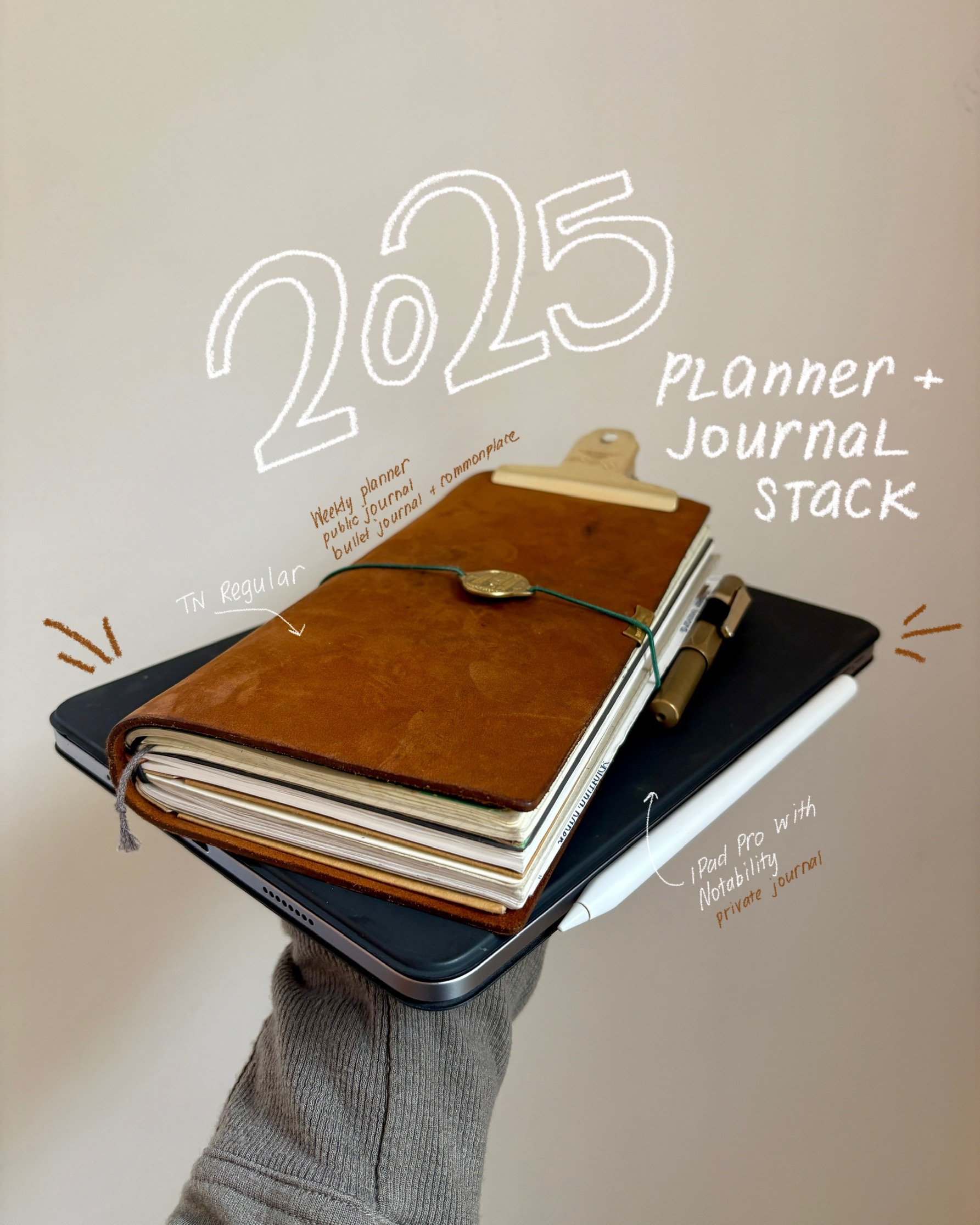
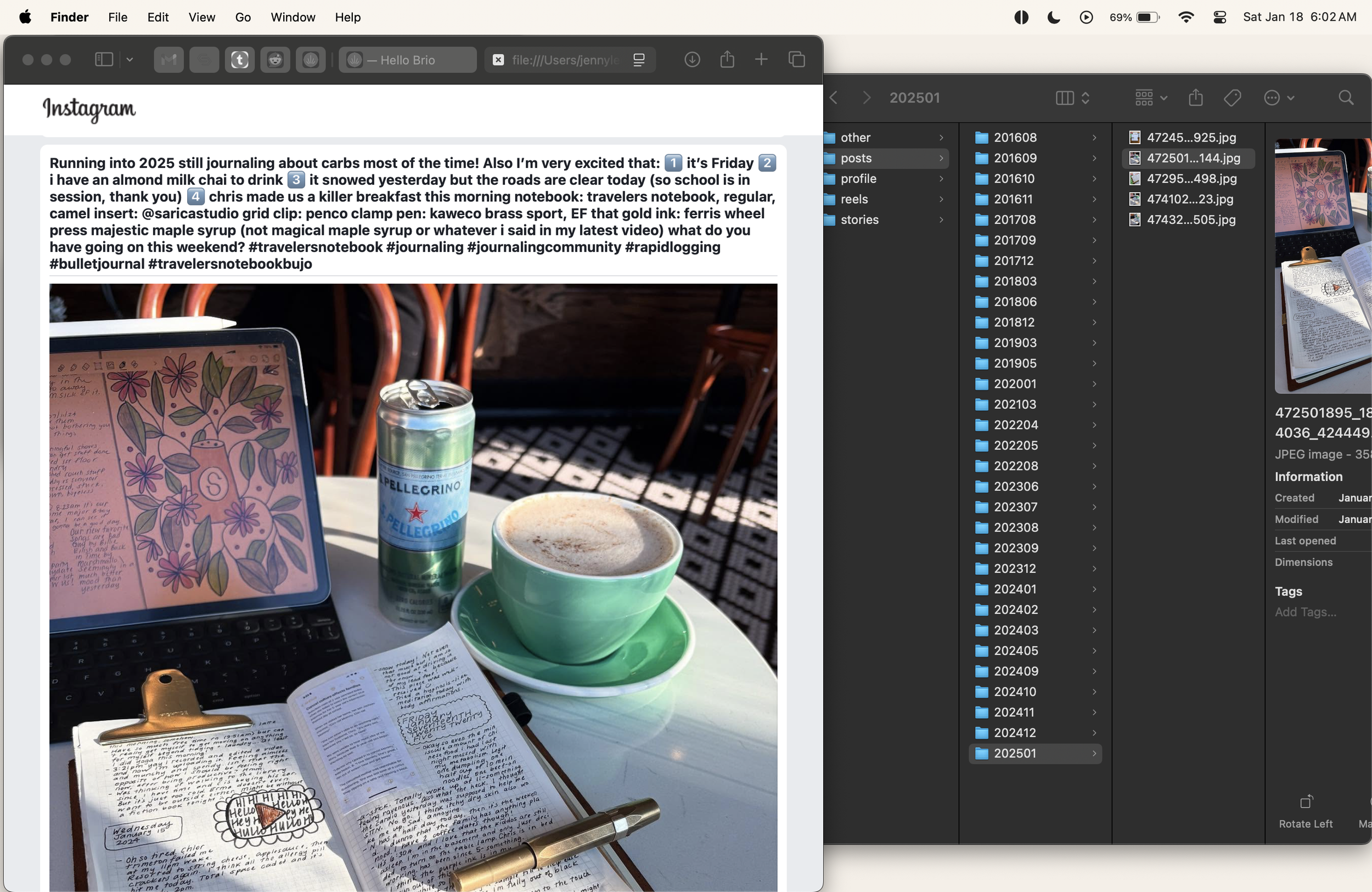

![How I journal on my iPad in Notability [2025]](https://images.squarespace-cdn.com/content/v1/603fd2e6b89a792feb000f9c/1675357907805-TSRYCEN9KUN66DNMHOLN/IMG_6041.JPG)
